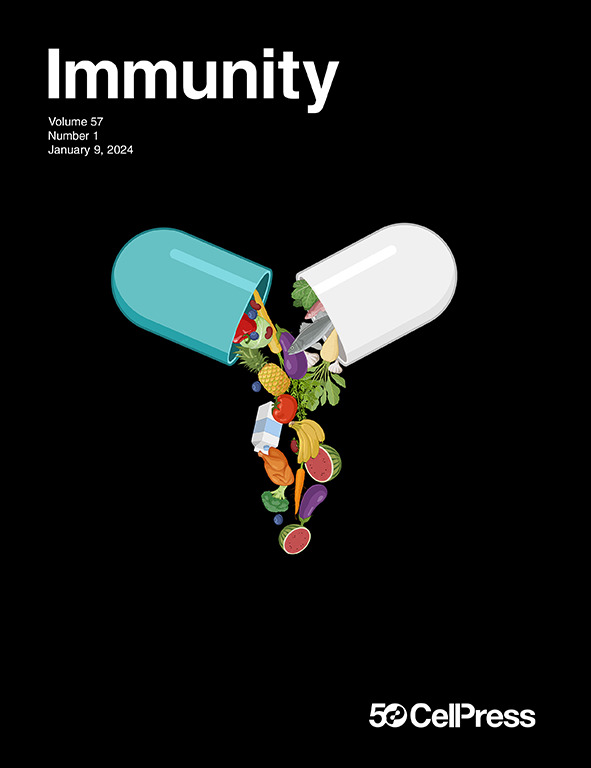The R136S mutation in the APOE3 gene confers resilience against tau pathology via inhibition of the cGAS-STING-IFN pathway
IF 25.5
1区 医学
Q1 IMMUNOLOGY
引用次数: 0
Abstract
The Christchurch mutation (R136S) in the APOE3 (E3S/S) gene is associated with attenuated tau load and cognitive decline despite the presence of a causal PSEN1 mutation and high amyloid burden in the carrier. However, the molecular mechanisms enabling the E3S/S mutation to mitigate tau-induced neurodegeneration remain unclear. Here, we replaced mouse Apoe with wild-type human APOE3 or APOE3S/S on a tauopathy background. The R136S mutation decreased tau load and protected against tau-induced synaptic loss, myelin loss, and reduction in hippocampal theta and gamma power. Additionally, the R136S mutation reduced interferon responses to tau pathology in both mouse and human microglia, suppressing cGAS-STING pathway activation. Treating E3 tauopathy mice with a cGAS inhibitor protected against tau-induced synaptic loss and induced transcriptomic alterations similar to the R136S mutation across brain cell types. Thus, suppression of the microglial cGAS-STING-interferon (IFN) pathway plays a central role in mediating the protective effects of R136S against tauopathy.

APOE3基因的R136S突变通过抑制cGAS-STING-IFN通路赋予tau病理的恢复能力
APOE3 (E3S/S)基因的Christchurch突变(R136S)与tau负荷减弱和认知能力下降有关,尽管携带者存在因果PSEN1突变和高淀粉样蛋白负荷。然而,使E3S/S突变减轻tau诱导的神经变性的分子机制尚不清楚。在这里,我们用野生型人类APOE3或APOE3S/S替换小鼠Apoe。R136S突变降低tau负荷,防止tau诱导的突触丧失、髓磷脂丧失以及海马theta和gamma功率的降低。此外,R136S突变降低了小鼠和人小胶质细胞对tau病理的干扰素反应,抑制了cGAS-STING通路的激活。用cGAS抑制剂治疗E3牛头病小鼠,可以防止tau诱导的突触丧失,并诱导类似于R136S突变的转录组改变。因此,抑制小胶质细胞cgas - sting -干扰素(IFN)通路在介导R136S对牛头病的保护作用中起着核心作用。
本文章由计算机程序翻译,如有差异,请以英文原文为准。
求助全文
约1分钟内获得全文
求助全文
来源期刊

Immunity
医学-免疫学
CiteScore
49.40
自引率
2.20%
发文量
205
审稿时长
6 months
期刊介绍:
Immunity is a publication that focuses on publishing significant advancements in research related to immunology. We encourage the submission of studies that offer groundbreaking immunological discoveries, whether at the molecular, cellular, or whole organism level. Topics of interest encompass a wide range, such as cancer, infectious diseases, neuroimmunology, autoimmune diseases, allergies, mucosal immunity, metabolic diseases, and homeostasis.
 求助内容:
求助内容: 应助结果提醒方式:
应助结果提醒方式:


